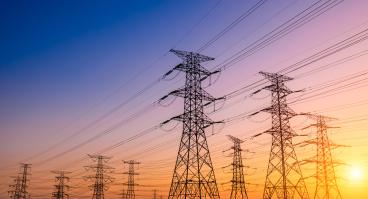In light of repeating oil supply disruptions and emerging environmental pressures, the international energy industry and scientific community are looking to non-conventional solutions to confront our ongoing energy security concerns. Energy is not just a critical concern to the United States, but also a global one. Among the most important technical challenges facing the world in the 21st century is providing clean, affordable energy, whose supply is sustainable and universally available. A solution to the global energy problem will require revolutionary new technology, as well as conservation and evolutionary improvements in existing technologies.
The James A. Baker III Institute for Public Policy, the Environmental and Energy Systems Institute, the Richard E. Smalley Institute for Nanoscale Science and Technology and the Shell Center for Sustainability sponsored a workshop to investigate potential contributions of solar-derived energy to a more efficient electricity grid in the United States and the role of nanoscience in advancing solar technology.
Click here to see the event program
Event Agenda and Presentations
October 16, 2004
Morning Session: Policy and the State of the Solar Industry
Moderator: Amy Myers Jaffe, Wallace S. Wilson Fellow for Energy Studies, Baker Institute
Welcome Remarks
"Our Energy Challenge"
Dr. Richard Smalley, Professor, Rice University
Opening Keynotes
"Light to Energy - Anywhere"
Dr. William Beckenbaugh, Chairman of the Scientific Advisors Committee, Konarka Technologies
"Status of the Photovoltaic Industry"
Dr. Franz Karg, Director, Global R&D and Technology, Shell Solar
Dr. Jean Posbic, Manager of Product Development, BP Solar
Discussion
Introduction and Workshop Overview
"Energy and Science: Strategies for a Better Future"
Dr. Wade Adams , Director, Center for Nanoscale Science and Technology, Rice University
"2nd Generation (2G) PV: CdTe, CIS, and a-Si Thin Films (and some reflections on the Federal R&D Program)"
Dr. Kenneth Zweibel , Manager, Thin Film PV Partnership, National Renewable Energy Laboratory
Discussion
Break
"A Renewable Energy Rationale"
Dr. Martin Hoffert , Professor of Physics, New York University
Lunch
Afternoon Session I: Economics and Public Policy Panel
Moderator: Amy Myers Jaffe, Wallace S. Wilson Fellow for Energy Studies, Baker Institute
"HVDC and Solar in the US Southwest"
Dr. Peter Hartley, Chairman, Department of Economics, Rice University
Dr. Kenneth B. Medlock III, Associate Professor of Economics, Rice University
"Solar Energy and the Implications of Nano-Technology"
Dr. Dagobert Brito, Peterkin Professor of Political Economy, Rice University
Juan Rosellon, CIDE and Senior Fellow, Center for Business and Government, Harvard University
"Obstacles for Solar Energy in the U.S."
Dr. Alexander Farrell, Assistant Professor, Energy and Resources Group, University of California Berkeley
"Low Cost but Totally Renewable Electricity Supply for a Huge Supply Area: A European/Trans-European Example"
Dr. Gregor Czisch, Institute for Solar Energy Technology, Kassel University
Break
Afternoon Session II: Thermal Solar
"SWNT Quantum Wire Nanostructured Carbon Conductors"
Dr. Howard Schmidt, Executive Director, Carbon Nanotechnology Laboratory, Rice University
"Concentrating Solar Power - Barriers and Opportunities"
Frank Wilkins, Solar Thermal Team Leader, Solar Energy Technologies Program, DOE
"Overview of Solar-Thermal Research in Israel"
Dr. Jacob Karni, Professor, Environmental Science and Energy Research Department, and Head of The Energy Center, The Weizmann Institute of Science, Israel
Discussion and Closing Remarks
October 17, 2004
Morning Session: Photolcatalytics and Photovoltaics
Moderator: Dr. Robert Hauge, Distinguished Faculty Fellow, Department of Chemistry, Executive Director of Science and Technology, Carbon Nanotechnology Laboratory, Rice University
"Photocatalytic Solar Energy"
Dr. Nathan Lewis, George L. Argyros Professor and Professor of Chemistry, California Institute of Technology
"Overview of the State of Play in the field of Photovoltaics"
Dr. Lawrence Kazmerski, Technology Manager, Solar Energy Technologies, National Renewable Energy Laboratory
"Overview of Breakthough Possibilities in the Science of Photovoltaics"
Dr. Paul Alivasatos , Department of Chemistry, University of California, Berkeley
Discussion
Break
"Dye Sensitizer Nanocrystalline Solar Cells"
Dr. Michael Graetzel , Laboratory for Photonics and Interfaces, Swiss Federal Institute of Technology
Lunch
Afternoon Session: Science and Technology for the Future
Moderator: Dr. Alex Ignatiev, Director, Texas Center for Superconductivity and Advanced Materials and Distinguished University Professor of Physics, Chemistry and Computer Engineering, University of Houston
"Third Generation Solar Photon Conversion: High Efficiency through Multiple Exciton Generation in Quantum Dots"
Dr. A.J. Nozik, Senior Research Fellow, National Renewable Energy Laboratory
"Potential of New Materials Technologies to Advance Solar Power from Space"
Moderator: Dr. Alex Ignatiev, Director, Texas Center for Superconductivity and Advanced Materials and Distinguished University Professor of Physics, Chemistry and Computer Engineering, University of Houston
Break
Wrap-Up Discussion
Watch video of the entire conference:


